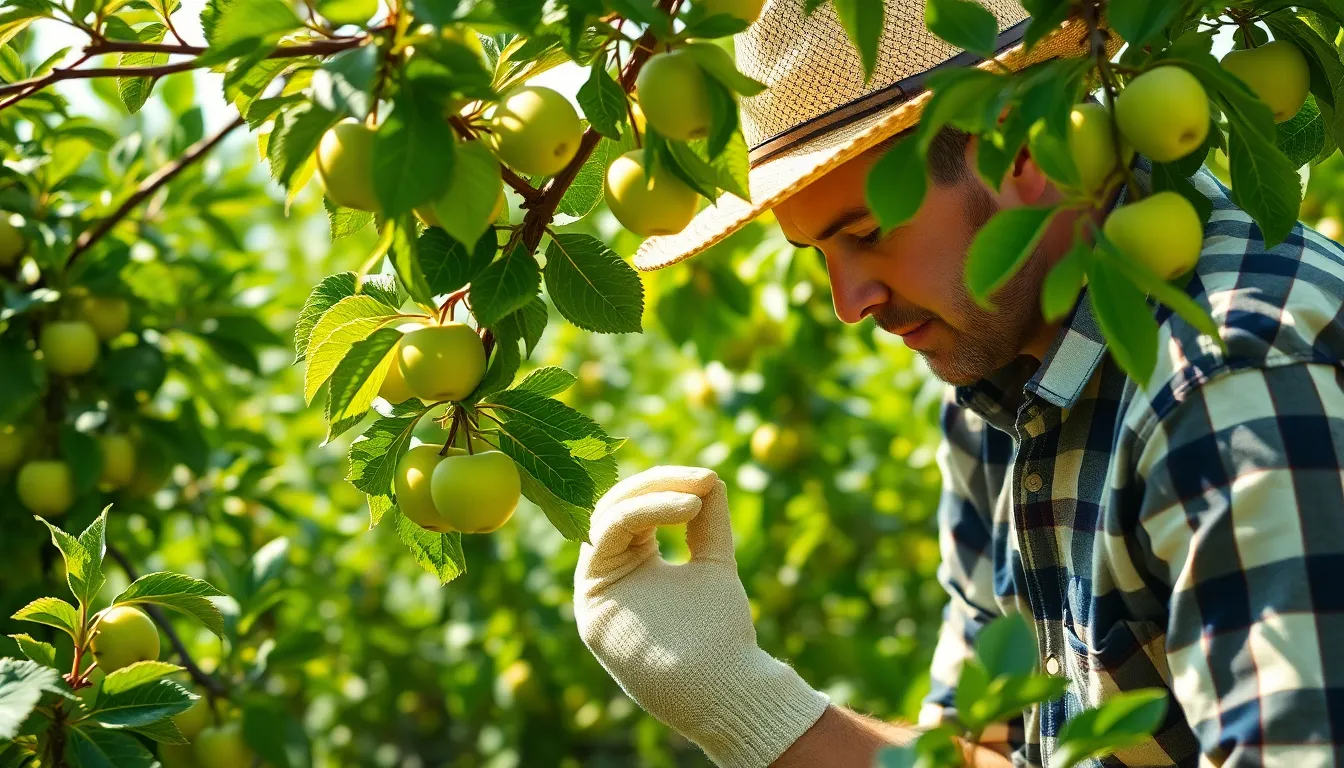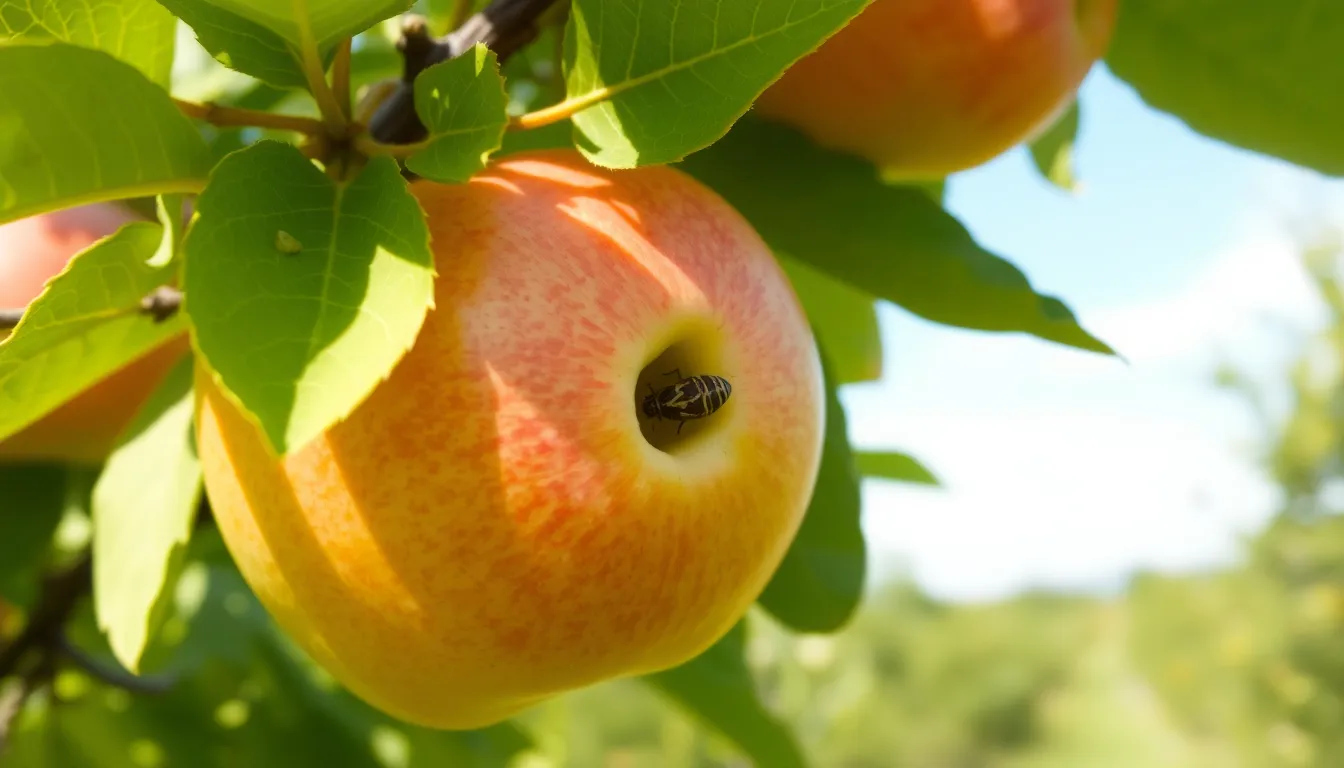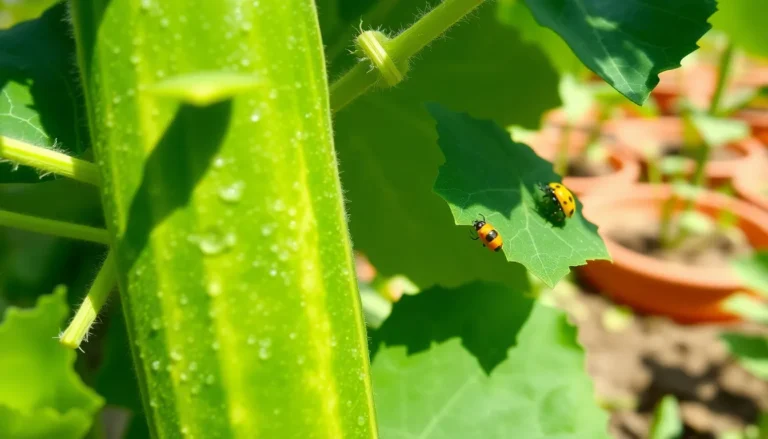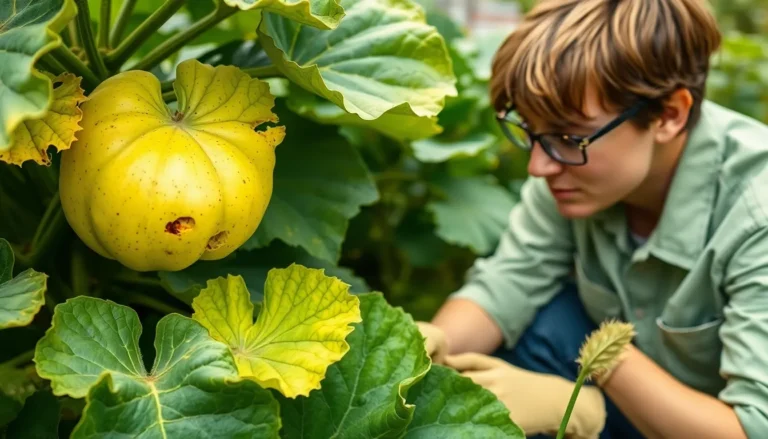
Apple Tree Pests: Discover How to Protect Your Orchard from These Common Invaders
Apple trees are a gardener’s delight, but they come with their own set of uninvited guests. Picture this: you’ve nurtured your tree, watched it bloom, and just when the apples start to form, here come the pests, ready to crash the party. From pesky aphids to sneaky caterpillars, these critters can turn your orchard dreams into a nightmare faster than you can say “organic pesticide.”
But fear not! Understanding these apple tree pests is the first step towards reclaiming your harvest. With a little knowledge and a dash of humor, you can outsmart these invaders and protect your juicy treasures. So grab your gardening gloves and let’s dive into the world of apple tree pests—because who says fighting bugs can’t be a fun adventure?
Apple Tree Pests
Apple trees attract various pests that threaten both their health and productivity. Aphids top the list of common invaders. They feed on the sap, weakening the trees and causing leaves to curl. Caterpillars also present a significant challenge. Large populations can defoliate trees, severely reducing fruit yield.
Spider mites often infest apple trees as well. These tiny pests create stippling on leaves and can lead to yellowing and premature leaf drop. Among the more destructive pests, the codling moth larvae tunnel into apples, resulting in significant damage and fruit loss.
Another pest of concern is the apple maggot. This fly lays eggs on the fruit, leading to unattractive, damaged apples. Additionally, scale insects can inhibit tree growth by sucking sap. Heavy infestations often result in a decline in vigor.
Regular monitoring proves crucial in this dynamic. Identifying early signs of infestation helps in choosing the right management strategies. Cultural practices such as maintaining tree health and proper sanitation can significantly reduce pest populations. Incorporating beneficial insects, like ladybugs and lacewings, also assists in natural pest control.
Using insecticidal soaps and neem oil assists in managing soft-bodied insect pests. These measures provide effective solutions with minimal environmental impact. Understanding the lifecycle of each pest allows for more targeted interventions.
Awareness of potential pests and a proactive approach keep apple trees thriving. By integrating several control methods, gardeners can successfully protect their harvest and sustain their apple tree’s health.
Common Types Of Apple Tree Pests

Gardeners must be aware of various pests that commonly target apple trees. Understanding these invaders helps in preserving the health of the trees and ensuring a fruitful harvest.
Aphids
Aphids are small, soft-bodied insects that suck sap from apple trees. Their feeding can lead to yellowing leaves, wilting, and stunted growth. They reproduce quickly, often forming large colonies. Beneficial insects, such as ladybugs and lacewings, naturally control aphid populations. Applying insecticidal soaps or neem oil effectively manages infestations while minimizing harm to the environment.
Codling Moths
Codling moths pose a significant threat to apple trees, especially in fruit development stages. The larvae burrow into apples, causing internal damage that leads to premature fruit drop. Gardeners can detect early signs by inspecting for entry holes on the fruit’s surface. Using traps or natural predators can help manage their numbers. Additionally, maintaining tree health through proper pruning and sanitation practices can reduce infestations.
Spider Mites
Spider mites are microscopic pests that thrive in warm, dry conditions. They create tiny webs on the leaves, leading to decreased vigor and fruit quality. Gardeners may notice yellow or stippled leaves as signs of infestation. Increasing humidity can help control spider mite populations. Introducing natural predators, such as predatory mites, offers an effective way to manage these pests. Regular monitoring allows for early intervention, protecting apple trees from damage.
Signs Of Infestation
Detecting early signs of infestation is crucial for maintaining healthy apple trees. Observations of visible damage and pest presence help gardeners take timely action.
Visible Damage
Visible damage often includes leaf discoloration and fruit deformities. Yellowing leaves signal potential aphid activity, while early fruit drop suggests codling moth larvae have invaded. Check for holes or tunneling in apples, indicative of internal feeding by pests. Spider mites lead to stippling on leaves, diminishing tree vigor. Monitoring these signs helps gardeners differentiate between healthy growth and pest issues.
Presence Of Pests
The presence of pests manifests through direct sightings or subtle indicators. Finding clusters of aphids on leaf undersides points to significant populations. Codling moths can be discovered through inspection for entry holes on fruits. Spider mites often leave fine webbing on leaves, increasing the likelihood of infestations. Regular checks for these pests support proactive management strategies, helping to preserve the apple tree’s health.
Prevention And Control Measures
Effective prevention and control measures are essential for managing apple tree pests. Implementing a mix of strategies helps protect trees and ensures a healthy harvest.
Cultural Practices
Cultural practices play a crucial role in pest management. Maintaining tree health through proper watering, pruning, and fertilization strengthens trees and makes them less susceptible to pests. Regularly cleaning fallen leaves and debris from around the base reduces hiding spots for pests. Crop rotation can disrupt pest life cycles, while planting pest-resistant apple tree varieties lowers the chance of infestation. Monitoring the environment for optimal conditions can curb pest populations, promoting a balanced ecosystem.
Chemical Treatments
Chemical treatments can provide immediate relief from pest infestations. Insecticidal soaps effectively target soft-bodied pests like aphids and spider mites, causing less harm to beneficial insects. Systemic insecticides may penetrate plant tissue, providing lasting protection from pests such as codling moths. Applying these chemicals during early stages of an infestation increases effectiveness. Always adhere to application guidelines and consider environmental impact when selecting products to ensure safety.
Natural Remedies
Natural remedies offer an eco-friendly approach to pest control. Neem oil acts as a powerful insect repellent and disrupts insect growth when applied to affected areas. Creating homemade sprays using garlic or hot pepper deters many pests and encourages beneficial insect activity. Introducing beneficial insects like ladybugs or lacewings helps maintain a natural balance and keeps pest populations in check. Monitoring carefully and applying these remedies regularly enhances their effectiveness in pest management.
Conclusion
Managing apple tree pests requires vigilance and a proactive approach. By understanding the specific threats posed by pests like aphids, codling moths, and spider mites, gardeners can effectively implement control measures. Regular monitoring for early signs of infestation is vital for maintaining tree health and maximizing fruit yield.
Incorporating cultural practices alongside natural pest control methods not only protects the trees but also promotes a balanced ecosystem. With a combination of proper care and timely interventions, gardeners can safeguard their apple trees and enjoy a bountiful harvest season after season.



